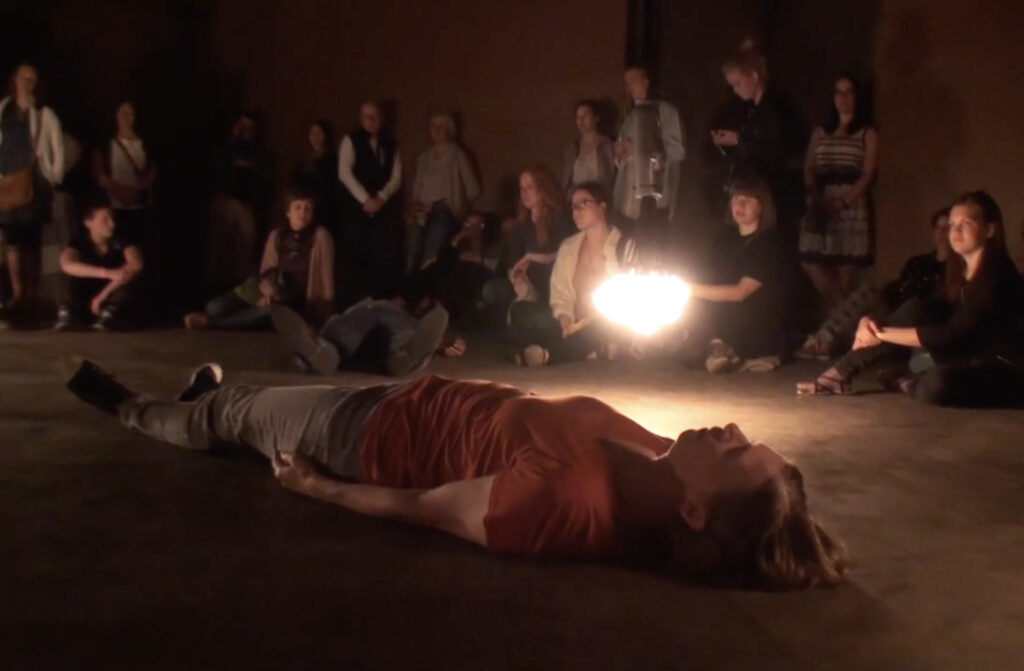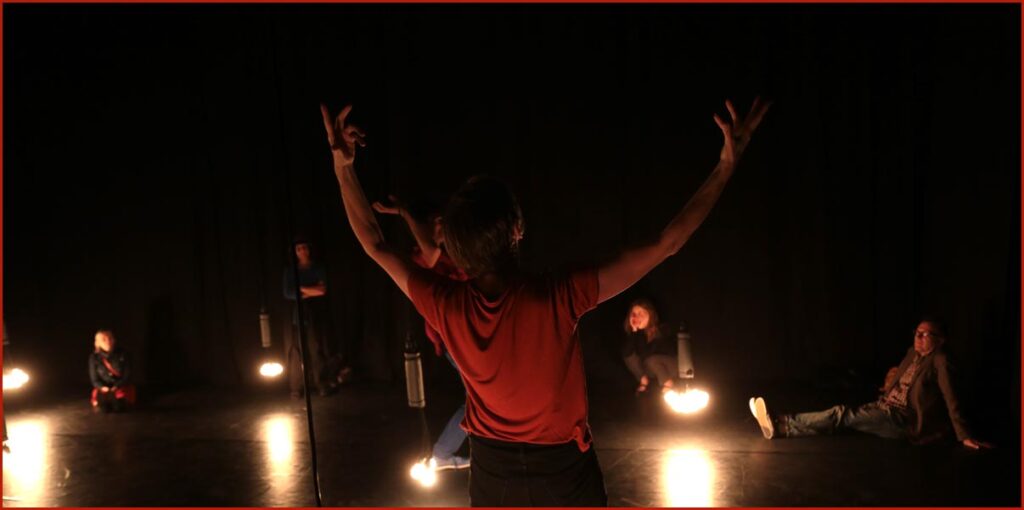“There is nothing in front of me. There is nothing underneath my feet. There is nothing to my left. There is nothing here. There is nothing beyond the door, nothing the cat is running away with. There is nothing buried underneath the tree. There is nothing bruised, nothing growing in my kidneys. There is nothing funny about a gold fish. There is nothing in the house, nothing in the Milky Way. There is nothing left to see. Funny.”
We are demonstrating to a collection of people what takes place in front of our very eyes. The bystanders may ‘see things a different way’; the point is that we act the behaviour in such a way that the bystanders are able to form an opinion about what we see, about what we do, about what we don’t do.
Consider: the incidents are very far from artistic ones. The demonstrators need not even be artists. The capacities we need to achieve our aim are in effect universal. Suppose we cannot carry out some particular movement as quickly as the victims we are embodying; what we could do is to tell that s/he moves three times as fast, and the demonstration neither suffers in essentials nor loses its point. On the contrary it is important that we should not be too perfect. We should not transport people from normality to ’higher realms’. We need not dispose of any special powers of suggestion.
Our performance is essentially repetitive. The event has taken place; even though it is taking place right in the moment we are performing it. However, we are not re-enacting our memory. There is nothing we draw our imitation from in order to make the story-telling more real. To the contrary, there is nothing to rehearse. And yet, there is a lot we piece together, to re-member. Our experience is not yours. We only want to mark it, sketch it, give it away.
Our illustration is poor. It doesn’t imitate the abundance of life, it rather exploits the absence of things. If we use imaginary objects, tools, weapons, if we sit on imagined chairs or ride taxis, we don’t perform the objects; the objects somehow perform us. We are shaped by them. We are more often pulled by the things we imagine than capable of pulling their strings. We are not puppeteers, even though we sometimes act that way. We are always taking two situations into account. We behave naturally as demonstrators, and we try to let the subject of the demonstration behave naturally too. We never forget nor do we allow it to be forgotten, that we are not only the subject but also the demonstrator.
What the audience sees is nevertheless a repeat. We repeat the theatre at work, the work (and failure) of imagination. We can change scenes in no time. We can reach any point of the world zooming in. We are here (stage) and there (where?) at the same time. Having the world right in front of our very eyes and being in it at the same time. Yet, having the eyes closed doesn’t mean we are more authentic, doesn’t mean that we are more there, ‚somewhere else’. We are not mediums, no shamans. We can’t summon the world.

Our purpose determines how thoroughly we have to imitate. To us the character being demonstrated remains a quantity that need not be completely defined. We need not imitate every aspect of our characters‘ behaviour, but only so much as gives a picture. Allowing for a picture of us shaping the situation, depicting the character by ‚his/her’ actions, a picture of us acting it. It can be seen that our streetcorner demonstrations provide opportunities for a pretty rich and varied portrayal of human types. And human deaths. How to die in Omsk? Life is an accident, to its own end.
We derive our characters entirely from their actions. Our point of view is the character’s point of view. We imitate their actions and so allow conclusions to be drawn about them. Saying what we do is doing what they say.
Figments. Words. Wordmaking = worldtaking. There are a zillion ways to end. Words are equalizers.
Reworked version. Performance from July 11th 2014 at Notafe in Viljandi/Estonia. Concept: Peter Stamer; Performers: Sybrig Dokter, Andreas Müller, Peter Stamer; Light Design: Andreas Harder & Peter Stamer; Dramaturgical support: Silke Bake, Christine Standfest; Production: GARAGE Wien; Developed at WELD Stockholm, Noore Tantsu Festival Viljandi, Uferstudios Berlin; Presented at Tanzquartier Wien, Tanzfabrik Berlin/Uferstudios Wedding, WELD Stockholm. Supported by Hauptstadtkulturfonds Berlin, Tanzquartier Wien and Tanzfabrik Berlin
Last presented on 18 and 19 September 2015 in the framework of the festival 720 Stunden September at UnterwegsTheater Heidelberg.

